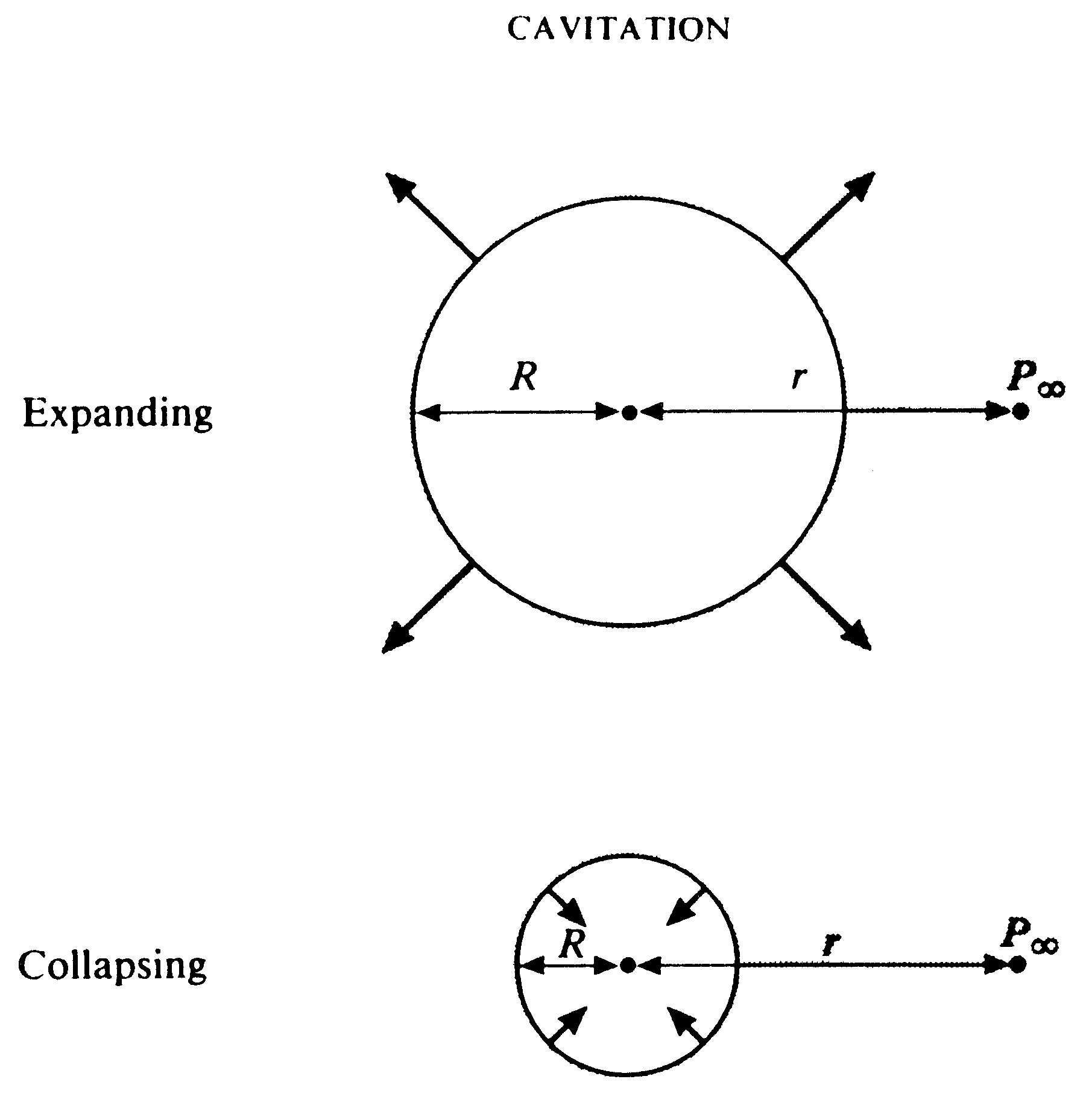"In a non-flowing system the ambient pressure can be varied by sending sound waves through the liquid. If the amplitude of the pressure variation is great enough to bring the pressure locally down to, or below, the vapour pressure in the negative parts of the sound cycle traversing the liquid, minute cavities or bubbles will grow. If the pressure amplitude is increased to produce zero, and then negative, pressures (i.e. tensions) locally in the liquid, the bubble growth is increased. The tiny bubble is thus set into motion, growing and contracting in the sound field. This motion may be of various kinds, usually complicated. Two distinct types of bubble motion are possible: in the first are stable cavities or bubbles that oscillate for many periods of the sound field, whereas in the second are transient cavities that exist for less than one cycle.
"Two important characteristics of acoustic cavitation should be mentioned here. The first is that generally it is a non-linear process in that the change in the radius of the bubble is not proportional to the Sound Pressure. The second is that the high compressibility of the gas bubbles means that much potential energy is obtained from the sound waves when the bubbles expand and that kinetic energy is concentrated when the bubbles collapse. In transient cavitation, this transformation of a low energy density sound wave into a high energy density collapsing bubble occurs because the motion is non-linear. Because it concentrates the energy into very small volumes (syntropy) it can produce very high pressures and temperatures which can erode solids, initiate chemical reactions and produce luminescence." (Young, Cavitation; McGraw-Hill, 1989.)

See Also
15.02 - Liberating Ozone from Water
15.03 - Questions Concerning Dissociation
15.04 - Dissociating Water with Fire
15.05 - Relative Diameters in Dissociation
15.06 - Power of Dissociated Water
15.07 - Dissociating Process
15.08 - Dissociating Water with X-Rays - Radiolysis
15.09 - Dissociating Water with Ultrasonic Vibration - Puharich
15.10 - Dissociating Water with Alternating Current - Puharich
15.11 - Dissociating Water with Vacuum
15.12 - Dissociating Water with Acoustic Cavitation
15.13 - Dissociating Water Acoustically - Liberation of Quantum Constituents
15.14 - Dissociation Liberates Spontaneous Energy
15.15 - Progressive Dissociation
15.20 - Dissociation Frequency
15.21 - Water Dissociation Demonstration
Cavitation
Dissociation
Electrolysis - Russell
Implosion
